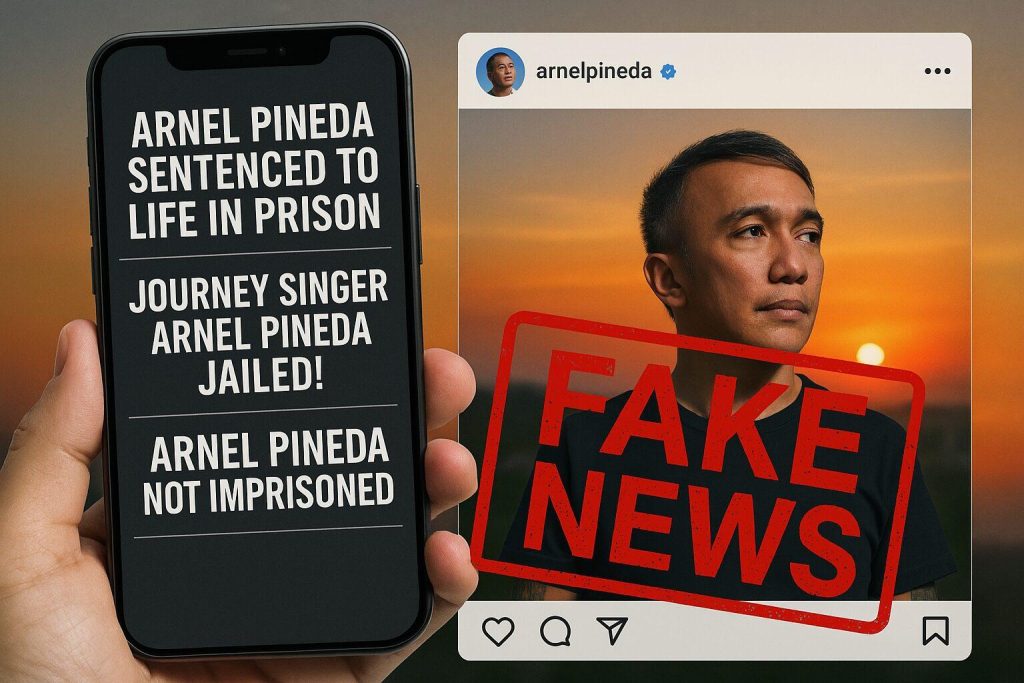Arnel Pineda Imprisonment Hoax: A Case Study in Misinformation and Media Literacy
The digital age has ushered in an era of unprecedented information access, but it has also brought with it the pervasive challenge of misinformation. A recent hoax targeting Journey frontman Arnel Pineda serves as a stark reminder of the speed and reach of fake news and the importance of critical thinking in the online world. False reports alleging Pineda’s life imprisonment sentence circulated on platforms like YouTube, complete with misleading thumbnails and fabricated narratives. These claims, however, were entirely baseless, lacking any corroboration from credible news sources. Pineda himself indirectly debunked the rumors through social media activity, showcasing his presence far from a San Francisco courtroom. Journey’s continued tour schedule, including recent performances and upcoming shows at major venues, further solidified the falsity of the circulating narrative.
This incident highlights the ease with which fabricated stories can gain traction in the digital landscape. The hoax targeting Pineda mirrors similar instances involving false death reports of celebrities like Jackie Chan, Morgan Freeman, and Celine Dion. The common thread in these cases is the rapid dissemination of misinformation before official sources can respond, misleading vast audiences and generating unnecessary anxiety and confusion. The proliferation of these hoaxes underscores the need for heightened awareness and proactive measures to combat the spread of fake news.
The Arnel Pineda hoax provides a valuable opportunity to examine the methods and motivations behind the creation and dissemination of fake news. Often, these fabricated stories are designed to exploit emotional vulnerabilities, particularly fear and outrage, to maximize their viral spread. Misleading visuals, such as edited photos or miscaptioned images, are frequently employed to enhance the credibility of these narratives. Understanding these tactics is crucial for developing effective strategies to identify and counter misinformation.
Combating the spread of fake news requires a multi-faceted approach that emphasizes individual responsibility and critical thinking. Verifying the source of information is paramount. Reputable news organizations maintain journalistic standards and provide traceable sources, unlike anonymous content creators or unknown websites. Cross-checking information across multiple credible sources is essential to confirm the validity of a claim. If a story is true, it will be reported by multiple reputable outlets.
Visuals accompanying online content should be scrutinized carefully. Manipulated images and misleading captions are common tools used to propagate false narratives. Tools like Google Reverse Image Search and TinEye can be utilized to trace the origin of images and verify their authenticity. Being aware of emotional triggers is also crucial. Content designed to evoke strong emotional responses, particularly fear or outrage, should be approached with caution as it is often engineered for viral spread rather than factual accuracy.
Checking dates and context is essential to avoid being misled by recycled or outdated information. Old news or photos can be presented as current events, creating a false impression of immediacy. Furthermore, actively reporting and refraining from sharing misinformation are crucial steps in curbing its spread. Flagging false content on social media platforms and avoiding engagement with unverified posts can help prevent further dissemination.
The implications of fake news extend far beyond celebrity gossip and entertainment. Misinformation can undermine trust in institutions, polarize communities, and even endanger lives, particularly in critical areas such as public health and elections. The COVID-19 pandemic served as a stark example of how unchecked misinformation can hinder coordinated safety efforts and create widespread confusion. The rapid spread of false cures, conspiracy theories, and misleading health advice hampered public health initiatives and exacerbated the crisis. Similarly, misinformation campaigns targeting elections can undermine democratic processes and erode public trust in electoral systems.
Cultivating media literacy in today’s digital landscape is not merely a desirable skill but an essential one. The ability to critically evaluate information, identify misinformation, and make informed decisions is crucial for navigating the complex online environment. Educational initiatives promoting media literacy skills can empower individuals to distinguish between credible sources and dubious claims, fostering a more informed and discerning online community. By being cautious, informed, and proactive, we can contribute to a more accurate and responsible information ecosystem.
In conclusion, the Arnel Pineda imprisonment hoax serves as a microcosm of the broader challenges posed by misinformation in the digital age. This incident underscores the need for vigilance, critical thinking, and a proactive approach to combating the spread of fake news. By embracing media literacy principles and adopting responsible online practices, we can collectively work towards a more informed and trustworthy online environment. The truth depends on those who choose to think before they share.


